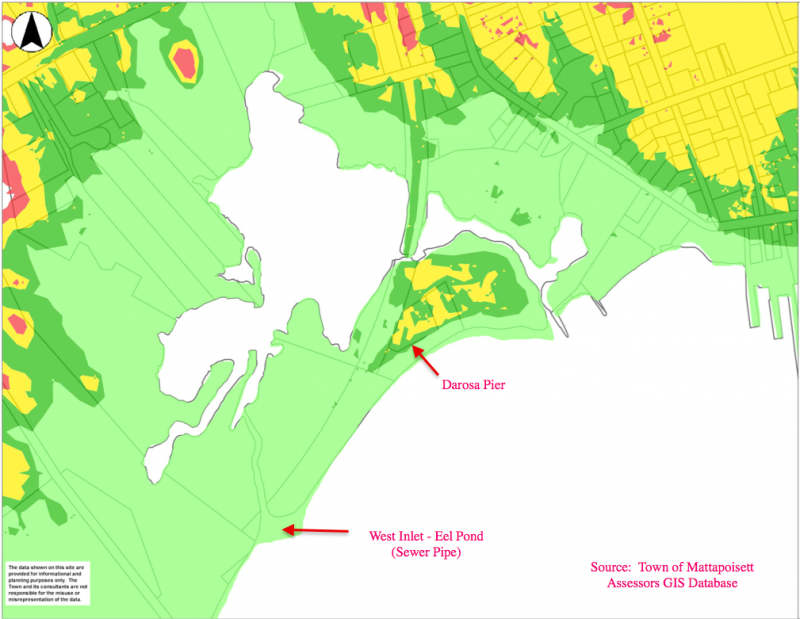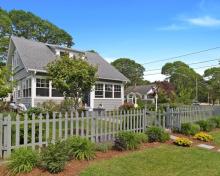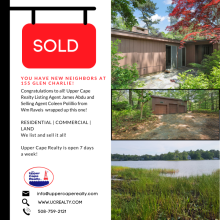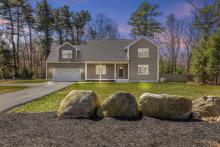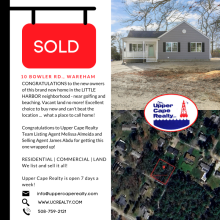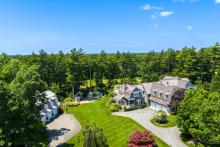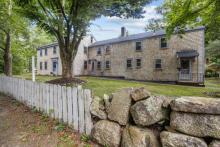Conservation Commission denies pier permit
In a 3-2 vote the Conservation Commission rejected a permit for a 290-foot pier proposed by Goodspeed Island residents Daniel and Laurie Darosa on Wednesday night.
The meeting was held at Old Hammondtown School to accommodate the large group of residents opposed to the pier. More than 140 people have signed a petition against the pier, which many think is too long, will affect shellfishing in the area and could jeopardize a nearby sewer main.
At a previous meeting, the Commission requested additional information from the Darosas, including eelgrass in the area and the structural integrity of the pier.
Chair Peter Newton was dissastified with some of the studies provided by the applicant, calling the structural analysis “woefully inadequate.”
Several letters have since been submitted to the Commission to question aspects of the project. A letter from the Water and Sewer Commissioners expressed concern over damage to the sewer should parts of the pier break apart during a large storm.
The Darosa’s engineer, David Davignon, said southeasterly storms would not send any debris from the pier into the pipe.
“Storm debris from the pier would have to go northwest, decide to do a 180-degree turn and then head due south. It’s not practical,” he said. “In my opinion, it’s a fantasy scenario.”
Ray Andrews, an assessor for the town, said the potential tax revenue from the pier, about $2,300, would not outweigh the negatives to the town. Moreover, Andrews said it is a recreational area.
“It’s one of the few sacred areas in the inner harbor for small boating,” he said, adding that the pier would be the only one on active shellfishing area.
“I don’t think it’s a good place for a dock of that size in Mattapoisett, and I don’t think it belongs there,” said Andrews.
Commission member Bob Rogers had a similar opinion.
“I think it’s a disproportionate use of the resource area by one property owner,” he said. “There’s multiple reasons why we’re protecting the resource area, but one of them is for the benefit of the townspeople.”
Others raised concerns over environmental factors that could affect the habitat.
John Janeiro questioned the pressure treated wood proposed for the pier and was worried it could leach into the water and affect the quahogs.
“I don’t want to feed my grandchildren or myself arsenic-laced clams,” he said.
Davignon said none of the pressure treated boards would have arsenic in them and the pylons would not use pressure treated wood.
Commission member Tom Kopp was concerned about having a boat with toxic paint floating above shellfish.
“I worry about having a boat so close to quahogs that will be eaten,” he said.
After hearing comments from the townspeople and Davignon, the board debated how to proceed, saying they were dissatisfied with some of the studies presented by the applicant. Ultimately, the board asked the Darosas if they would pay for further studies by an independent engineer.
The Darosas discussed the option with Davignon and their lawyer, John Gushue, and declined the option.
He also said the pier’s design is “time tested” and that the sewer main issue was “highly speculative.”
“Other piers haven’t had to have a study like this,” said Gushue. He requested a decision from the board.
Several members said they needed more information before they would consider approving the permit. Mike King said a “no” from the board would mean the town had no say over the permit.
“You run the risk then of losing any local control whatsoever if it gets approved at the state level,” said King.
He was in favor of adding special conditions to the permit, but member Marylou Kelliher made a motion to deny the permit.
Taken to a vote, Kelliher, Rogers and Newton voted in favor of the motion while King and Kopp opposed it.
The Darosas are expected to appeal the decision. They have also submitted a permit with the regional Department of Environmental Protection that will evaluate the public and private uses around the pier site.
Residents may submit comments to the DEP, but must be postmarked Tuesday, Oct 21. The address is Carlos T.B. Fragata, Environmental Analyst, DEP Waterways Regulation Program, 20 Riverside Dr., Lakeville, MA 02347.



